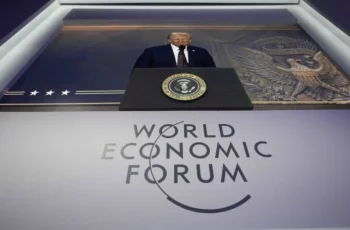
The 25th summit of the Shanghai Cooperation Organization (SCO) in Tianjin will likely be remembered not for diplomatic pageantry but for the clarity with which it revealed a new strategic horizon: the determination of Eurasia to build financial sovereignty. The call by China’s Xi Jinping to accelerate the creation of an SCO Development Bank may look technocratic on the surface, yet it is best read as an act of strategic statecraft an institutional counter to the weaponization of finance that has defined Western power in the post–Cold War era. If the 1990s inaugurated a world of unipolar supply chains and dollar-denominated finance, the 2020s are making visible the limits of that model. Tianjin marks a moment when the SCO chose to make those limits actionable.
For two decades, the SCO was treated in Western capitals as a loose security club important for managing borders and extremism, but peripheral to the levers that really matter: money, payments, credit. That reading is now obsolete. The modern landscape is one where payment rails, clearing systems, currency swaps, compliance protocols, and commercial law have become the frontlines of geopolitical influence. When Washington deploys secondary sanctions, pressures insurers and shippers, or threatens penalties for dollar transactions with blacklisted entities, it is not merely “doing economics”; it is wielding power. The corollary is straightforward: if finance is a battleground, sovereignty requires building fortifications institutions, rules, and rails that reduce exposure to the dollar’s choke points. An SCO Development Bank is precisely such a fortification.
The logic of this project can be grasped in three layers. The first is infrastructural: creating alternative funding channels, clearing arrangements, and long-tenor credit for cross-border projects within a legal environment more insulated from extraterritorial enforcement. The second is political: signaling to member states and partners that there exists a community willing to finance development without the familiar package of conditionalities that reconfigure domestic priorities to fit external preferences. The third is civilizational: institutionalizing multipolarity by translating it into repeated practices loan committees, procurement standards, dispute-resolution forums so that an alternative is not only imagined but routinized.
Iran sits at the heart of this case. The reactivation of UN snapback sanctions under Resolution 2231compounded by layers of U.S. and allied measures does more than restrict trade; it freezes critical arteries of modern economic life. Banks face know-your-customer and sanctions-screening traps, insurers fear penalties for underwriting shipments, and payment service providers steer clear of even lawful commerce to avoid compliance risk. For an economy under inflationary stress and post-escalation damage, such frictions are not abstract they are existential. Tehran’s argument is blunt: without credible, sanction-resilient finance, development planning becomes theater. An SCO bank could not magic away all constraints, but it could materially alter the risk calculus by offering credit outside dollar channels, by settling in local currencies where feasible, and by providing a multilateral umbrella under which bilateral energy-for-infrastructure swaps and long-dated offtake agreements become financeable.
Critics will note that sanctions risk “travels”: even non-dollar transactions can be targeted through the legal reach of secondary measures. True. That is why the institutional design matters. The SCO bank’s credibility would hinge on three design pivots. First, governance: voting weights and capital subscriptions must balance political heft with operational independence enough distance from any single capital to reassure smaller members that the bank serves regional development rather than a bilateral agenda. Second, legal insulation: contracts governed by jurisdictions less vulnerable to extraterritorial discovery and seizure, robust sovereign-immunity clauses, and dispute-resolution venues outside Western legal hubs. Third, compliance by design: paradoxically, to evade politicized over-compliance the bank must be more not less disciplined on baseline AML/CFT standards, so that counterparties cannot be smeared as reckless. The objective is not opacity; it is autonomy.
None of this occurs in a vacuum. Russia’s experience since 2022 has condensed a decade of gradual de-dollarization into a crash course in financial adaptation: local-currency settlement, alternative messaging systems, gold-heavy reserves, and re-routing commodity trade via friendly ports and insurers. China’s Belt and Road commitments, many of them in sanctioned or high-risk jurisdictions, have created their own demand for risk-tolerant financing that will not be derailed by a sanctions notice. Central Asian economies, though not under direct fire, increasingly view diversification of funding as an insurance policy against volatility whether geopolitical, commodity-cycle, or climate-driven. Pakistan’s brush with debt distress and austerity illustrates a further point: the demand for development finance that is not bundled with fiscal conditionalities aimed at liberalization for its own sake. An SCO bank, if run competently, could occupy a space between traditional multilateral lenders and purely bilateral state financing multilateral enough to scale and standardize; political enough to resist weaponized interdependence.
Skeptics, again, are right to probe feasibility. Where will the capital come from? How will risk be priced if credit ratings agencies steeped in Western benchmarks assign punitive scores? Will India, wary of Chinese leadership and protective of its own strategic autonomy, sign on to a scheme that might strengthen Beijing’s financial footprint? These are not footnotes; they are core constraints. Yet they are also not terminal. The BRICS New Development Bank began with modest footprints and uneven politics; it is now a functioning institution. The Asian Infrastructure Investment Bank faced geopolitical suspicion at birth; it broke ground by emphasizing professional governance, environmental standards, and procurement transparency, drawing in a broad membership. An SCO bank can learn from both: marry sovereignty with standards, and geopolitics with professionalism.
The technical repertoire is broader than critics allow. Currency-swap lines among central banks can backstop liquidity for trade settlement in local units. Project bonds can be structured for placement in regional markets where savings pools seek returns uncorrelated to Western cycles. Hybrid facilities part credit, part commodity offtake can bring cash-flow predictability to projects that otherwise spook orthodox lenders. Cross-border CBDC experiments (think of multi-central-bank pilots) can, over time, compress settlement risk and increase the autonomy of payment rails. None of these are silver bullets; together they compose an ecosystem in which a sanctioned state’s access to capital narrows more slowly, and sometimes widens.
What of the Middle East beyond Iran? Here the SCO’s financial turn intersects with a broader re-balancing. Turkey hedges between NATO and Eurasia; its private sector knows the pain of dollar funding squeezes and the appeal of diversified credit. Egypt’s cycles of IMF programs and austerity have repeatedly generated social costs that fuel political fragility; the availability of non-punitive infrastructure lending would change policy options at the margin. Persian Gulf financiers, pragmatists par excellence, already experiment with yuan-denominated deals and longer-dated supply contracts. An operational SCO bank would give these experiments an institutional counterparty. The point is not to “replace” the dollar across the region; it is to reduce the leverage that dollar primacy confers in moments of crisis.
Timing amplifies meaning. Tianjin unfolded against a background of grinding war in Ukraine, escalation in Gaza, tariff revivalism in Washington, and an inflation-scarred global economy. In such a world, calls for “rules-based order” ring hollow when the rules are reinterpreted to fit a sanctioning power’s immediate tactics. The SCO’s answer is not rhetorical: it is institutional. Build your own rules, your own rails, your own lender of first resort. Multipolarity, in this telling, is not an abstract slogan; it is a to-do list charter language, callable capital, loan books, compliance manuals, procurement panels. That is how monopolies end: not by manifestos, but by alternatives that work well enough to become habits.
Washington should read this moment with sobriety. The intuitive response more sanctions, broader secondary enforcement, louder morality will accelerate the search for exits. The more promising response would be strategic restraint: sanctions as a scalpel, not a hammer; diplomacy that concedes space for regional autonomy; a recognition that coercive finance cannot substitute for political settlement. Whether Washington can pivot is uncertain. Bureaucracies normalize the tools they use most; Congress rewards performative toughness; media incentives valorize punitive gestures. But if policy cannot adapt, structure will. Institutions like an SCO bank will grow into the gaps left by overreach.
For the SCO, the burden of proof now shifts from symbolism to performance. Can it mobilize sufficient paid-in capital without diluting standards? Can it withstand legal and reputational attacks while maintaining conservative risk management? Can it demonstrate that “no conditionality” does not mean “no scrutiny,” that loans will be audited, projects will be procured competitively, and environmental and social safeguards will not be sacrificed to expedience? If the answer is yes, the bank will not only fund roads and grids; it will teach a generation of officials, bankers, and lawyers how to transact outside Western tutelage. That, more than any single loan, is the point.
Tianjin to Tehran is not just a metaphorical route. It is a map of how financial sovereignty is built in a world where power flows through spreadsheets as much as through warships. Iran’s predicament sharpens the stakes; Russia’s adaptation provides the template; China’s capacity supplies the machinery; Central Asia’s demand anchors the pipeline. An SCO Development Bank will not overturn the dollar tomorrow. But it will shorten the distance between aspiration and agency. It will make it easier for states to say no, and harder for sanctions to foreclose development. That is how monopolies unravel slowly, then suddenly.
If historians ever date the moment when multipolar finance ceased to be a debating point and became an institutional project, they may circle 2025 and scribble “Tianjin.” Not because a single summit changed the world, but because a coalition tired of being disciplined by someone else’s money decided to build its own.










Comments